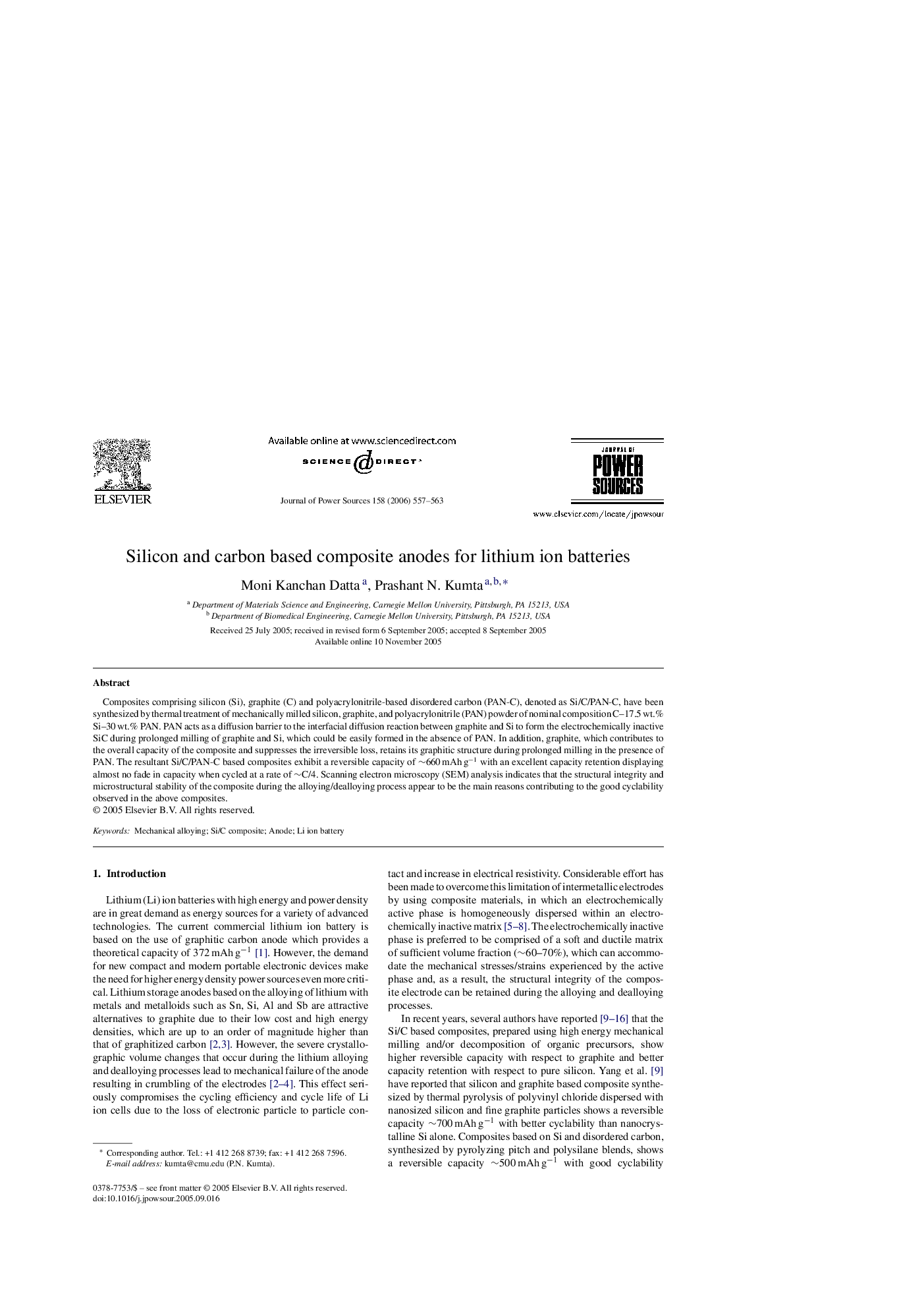| Article ID | Journal | Published Year | Pages | File Type |
|---|---|---|---|---|
| 1287602 | Journal of Power Sources | 2006 | 7 Pages |
Composites comprising silicon (Si), graphite (C) and polyacrylonitrile-based disordered carbon (PAN-C), denoted as Si/C/PAN-C, have been synthesized by thermal treatment of mechanically milled silicon, graphite, and polyacrylonitrile (PAN) powder of nominal composition C–17.5 wt.% Si–30 wt.% PAN. PAN acts as a diffusion barrier to the interfacial diffusion reaction between graphite and Si to form the electrochemically inactive SiC during prolonged milling of graphite and Si, which could be easily formed in the absence of PAN. In addition, graphite, which contributes to the overall capacity of the composite and suppresses the irreversible loss, retains its graphitic structure during prolonged milling in the presence of PAN. The resultant Si/C/PAN-C based composites exhibit a reversible capacity of ∼660 mAh g−1 with an excellent capacity retention displaying almost no fade in capacity when cycled at a rate of ∼C/4. Scanning electron microscopy (SEM) analysis indicates that the structural integrity and microstructural stability of the composite during the alloying/dealloying process appear to be the main reasons contributing to the good cyclability observed in the above composites.
